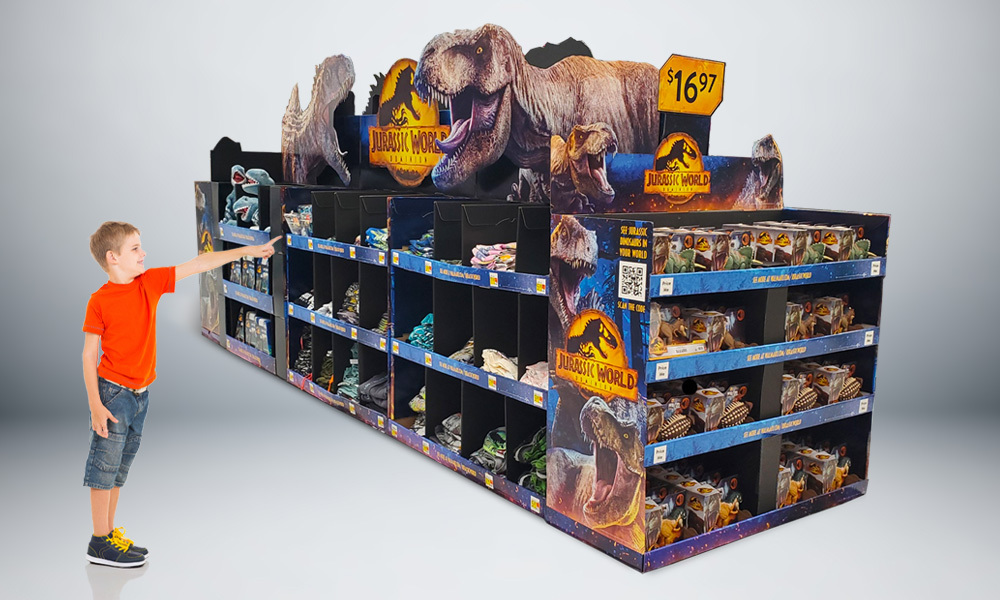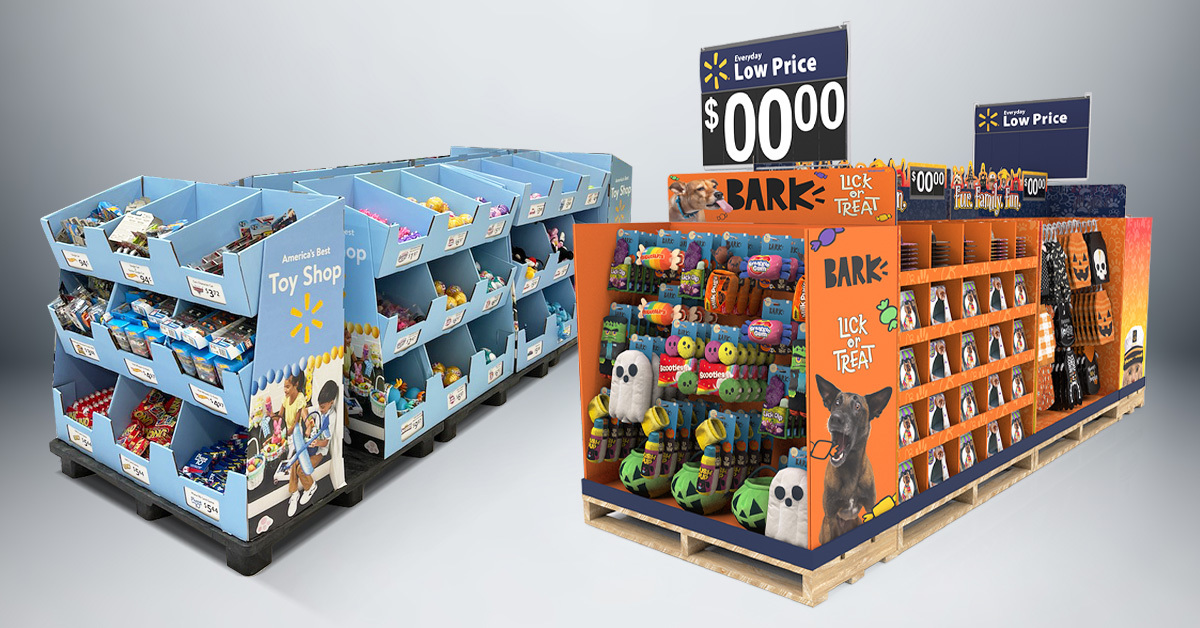Well-designed displays are critical to making the most of your in-store advertising spend. In addition to driving sales, good displays do everything from educating shoppers about your products (and how to use them) to boosting brand awareness.
One compelling type of display? Retail display trains.
In this article, we’ll look closer at this versatile and flexible point-of-purchase (POP) display option, including benefits, use cases, and examples. Read on for your complete guide to retail display trains.
What is a Retail Display Train?
To understand what a retail display train is, we’ll first backtrack to define pallet displays. Available in various sizes, pallet displays are designed as both displaying and transportation mechanisms for products. Pallets go directly from the shipper to the retail store floor.
Not only does the pallet display type minimize everything from labor to storage space requirements, but it’s also an excellent way to make a lasting first impression on consumers. Display pallets are designed to catch shoppers' attention at a critical (and valuable) part of the buyer’s journey. But even when they don’t nab sought-after impulse buys, they still raise brand awareness and build brand recognition.
What’s better than one pallet display? If you’ve got ample space and products to display, the answer may be a display train.
Combining multiple pallet displays, display trains—also called pallet trains—offer maximal design flexibility and customizability. Whether focusing on a single product line from one vendor or creatively uniting products from multiple vendors into one cohesive display, these super-sized displays have extraordinary potential for impacting consumers.

The Benefits of Display Trains
Display trains offer the same benefits as all retail POP displays—amplified! Powerful sales and marketing tools, they get your products in front of shoppers at the vital point of purchase. The importance of this cannot be overstated—especially when you factor in that impulse buying represents a staggering 40 to 80% of purchases.
However, the advantages of pallet trains and other POP displays aren’t limited to the point of sale. They also have value throughout the entire buyer’s journey in creating brand awareness, boosting brand familiarity and perception, and keeping your brand top-of-mind with consumers.
Even for buyers who don’t yet think they need your products, an effective display will make sure your brand is the first thing they think of when they do. It can even convince them to make that same purchase—on the spot!
How to Use Display Trains
Often used by mass merchants, display trains work similarly to all POP displays—albeit on a larger scale. Display trains can be used in an almost endless assortment of ways.
For example, if your brand wants to get the word out about a new product line, a retail display train can showcase the breadth and depth of items included in the collection.
Display trains are also common with seasonal or holiday products. For example, with summer approaching, one or more brands may choose to create a display alone or together featuring must-haves for the beach, pool, or vacation.
Display trains are also popular for entertainment brands launching licensed products for movies, video games, and similar products. Not only does the display help to generate buzz surrounding the new release, but it also pushes the related merchandise.

Tips for Making the Most of Display Trains
As with all in-store displays, the impact of a retail display train depends on its execution. Many factors go into creating a successful in-store display, including:
- A prime location in a high-traffic area with lots of visibility or in a store section relevant to your target audience
- Hearty construction made with durable materials like corrugate cardboard that hold up to the demands of shipping, display use, and relocation
- A unique and memorable design that will catch shoppers’ eyes and attention while differentiating your brand from your competitors
- Text and graphics that inform and educate while also conveying the desired product and brand messaging
- Right-sizing, utilizing a properly sized display—both for the space your display is occupying, and for the products it contains
- A commitment to maintaining a clean, organized, and well-stocked display
At Bay Cities, we’ve got extensive experience helping brands plan and design effective display trains and other retail displays. Check out our eBook How to Be Successful in Retail with a POP Display for more ways to ensure that your displays are effective enough to drive impulse buys, connect with customers, and communicate brand messaging. And when you're ready to take your brand to the next level, contact us to get started on your next retail display project!



/BC_Logo2_White.png?width=300&height=83&name=BC_Logo2_White.png)